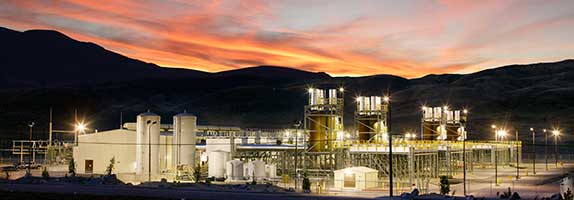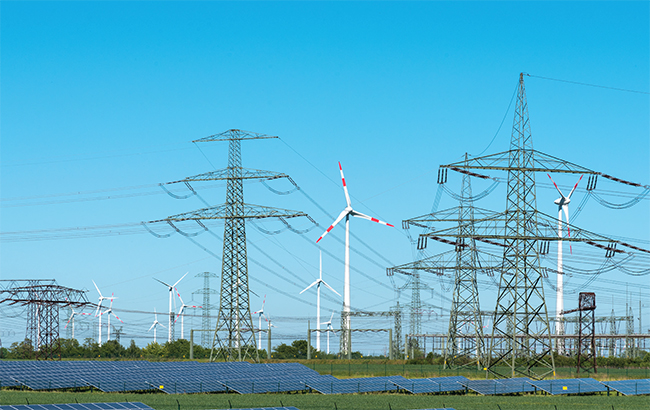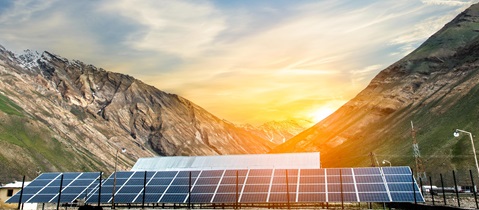

About Marine
Energizing India
Wärtsilä power plants are the ideal solution for decentralized power production and an attractive alternative to the conventional model of centralized power plants.
Wärtsilä’s solutions are available for large plants of 500 + MW capacity. Our gas based power plants are highly flexible and offer the following benefits:
Our power plants can be used for base-load applications or for peak-load needs or to complement wind energy. Our engines can handle liquid fuels such as HFO/LSHS, LFO, LBF or natural gas. Versatile dual-fuel engines can switch between liquid fuel and gas, on line. The CCHP solutions have a very low CO2 footprint, and merit status of ‘deemed renewable energy’.
We provide complete EPC solutions and lifecycle O&M support.
Wärtsilä has been involved with the Indian market for over 25 years, and has an installed base that exceeds 3500 MW, with a large service organisation to provide lifecycle support to customers. Many of the engines have clocked over 1,00,000 hours of operation. The 48MW power plant at Mangalore Chemicals & Fertilisers Ltd has completed 25 years of continuous generation.
For India to take a rightful place in the group of developed nations, electrical energy availability to each section of the population in stable and adequate quantity is a must. Energy demand fluctuates during the course of 24 hours in a day, during passage of different seasons and also sees substantial unpredictability over the years based on climatic condition, political and social expressions and many other factors specific to that year. Introduction of renewable power feed such as wind & solar etc. though extremely desirable from environment & sustainability point of view, adds more unpredictability to the supply-demand situation in the grid.
Wärtsilä leads the transition towards a 100% renewable energy future. We help our customers in decarbonisation by developing market-leading technologies. These cover future-fuel enabled balancing power plants, hybrid solutions, energy storage and optimisation technology, including the GEMS energy management platform. Wärtsilä Energy’s lifecycle services are designed to increase efficiency, promote reliability and guarantee operational performance.
Our track record comprises 74 GW of power plant capacity and more than 80 energy storage systems delivered to 180 countries around the world.

The electricity landscape in India is evolving rapidly. The government is committed to increasing the share of non-fossil fuels in the electricity mix to 50 percent by 2030. Increasing the share of renewables in the electricity mix will make the power system more sustainable. However, the efficient integration of renewables in the grid can be rather cumbersome without suitable balancing resources.
Managing India's power system is becoming increasingly complex as it's resource mix evolves to include more weather dependent, decentralised, and variable renewable energy sources. In order to deal with such complexity, the system operator will need more flexibility to serve load while maintaining grid reliability.
Considering the changing system needs, Wartsila commissioned KPMG to carry out an Ancillary Services Market Study to understand the market structure in India. How can we provide appropriate price signals to reflect both operational and resource requirements while encouraging efficient investment and retirement decisions?
ii.jpg?sfvrsn=40f58544_6)

Wärtsilä, in collaboration with the Lappeenranta-Lahti University of Technology (LUT), has carried out a modelling study to explore the feasibility of a net-zero power system across India by 2050. The findings of the study show that India can undertake a cost-optimal shift to 100% renewable energy (RES) and avoid locking in a highly polluting, more expensive and less effective transition.
India has embarked upon a laudable and ambitious program to install 100 GW of solar PV plants and 60 GW of wind turbine plants by 2022. However, such a large scale addition of variable or intermittent generation in a system packed with inflexible baseload coal plants – expected to total to around 250 GW by 2022 -will pose a challenge to grid management. Tackling this will require some planning and course correction.
Is there a precedent of any other country tackling such a high percentage of RE in its overall mix? Even if simplistic, let’s consider the examples of Germany and China.
In Germany – which has invested heavily in wind and rooftop solar PV plants- there is wide variability in both RE output and the power demand. There are times when RE generation exceeds the total demand, and times when it slackens off considerably. Due to the feed-in rights of RE generation, it gets despatch priority and baseload coal plants are turned down proportionately. If there is excess still, it is ‘dumped’ on the larger European grid- causing serious discomfort to the neighbouring markets. When RE generation is inadequate, the baseload plants ramp up suitably. Thus, in the German example, flexibility is achieved by turning up/down the coal plants. Paradoxically, this has increased the country’s net carbon emission, defeating the purpose of adding RE. The overall cost to consumer has also increased.
In China, over a 100 GW of wind turbines have been installed- particularly in the Northern provinces, which also, incidentally, have large coal reserves and a large number of pithead coal plants. As load centres are far away in the East and South-East, power is transmitted through HVDC lines. When the winds are high , and the demand is lower ( as in the night time or early mornings), the coal plants are turned down but as they need to be kept operating at a minimum load- either due to technical restrictions or because they need to provide heat- the only way to manage the excess is by curtailing wind generation. In 2015, according to Bloomberg data, over 16% of wind generation was curtailed in China- again defeating the purpose of adding RE plants, even as coal plants recorded an abysmal annual load-factor of 41%.
India seems to be heading the China way. Due to over-reliance on coal plants which have a rather inflexible operating profile, the variability of RE generation would need to be tackled either by curtailing it (as is already happening in Tamilnadu) or absorbing it by cycling down coal plants to a technical minimum level with low efficiency. Coal plants are already operating at a poor load factor of 51% and RE addition will only worsen the problem.
A report released by the Ministry of Power on ‘RE integration” in April acknowledges these issues and has, among other things, emphasised the need for more flexible generation in the system. In this context, “flexibility’ means a plant’s ability to start and ramp up to desired load within a few minutes (when RE generation falls), stop or reduce generation instantly (to fully absorb RE generation when it picks up), start/stop any number of times without a maintenance penalty and operate efficiently at all loads.
Hydro-electric plants are ideal for this application. However, the potential does not exist in all states and even where it does, it is not an all-season solution as it is rain-dependant and irrigation-linked. Fast-response gas-based generation is a good alternative. Modern plants, especially those based on combustion engines, have all the desired characteristics, with its all-season despatchability and ability to ramp up to full load within 5 minutes. These are different from the many plants in the country that are based on combined-cycle gas turbine technology and, not flexible enough for purpose of RE-balancing, are being operated sub-optimally as baseload plants.
But isn’t gas-based generation expensive? It is, if viewed in a narrow sense of cost/KWh at plant level. However, viewed holistically at a system level, it helps in reducing the overall generation cost per KWh by a) allowing coal plants to operate at its best load and efficiency- without the need to cycle down and incur more maintenance costs, b) helping absorb cheaper and cleaner RE fully – without burdened by its variability c) by reducing the need for water, an increasingly precious commodity and d) reducing the investment costs as the capex is far lower and the commissioning quicker. The cost of gas has also come down considerably in recent months.
Thus, flexibility needs to be built in by a capacity-planning modelling exercise and optimising the generation mix suitably. We can limit addition of coal plants to meet baseload requirement and allow hydro and flexible gas plants to complement RE. With this approach, we can meet our RE-generation and carbon-emission targets- without impacting reliability of the system.
Please fill in the form, we aim to respond within 1-2 business days depending on the enquiry. For an existing installation, provide all necessary details to identify the installation and the equipment. Fields indicated with an asterisk (*) are required.